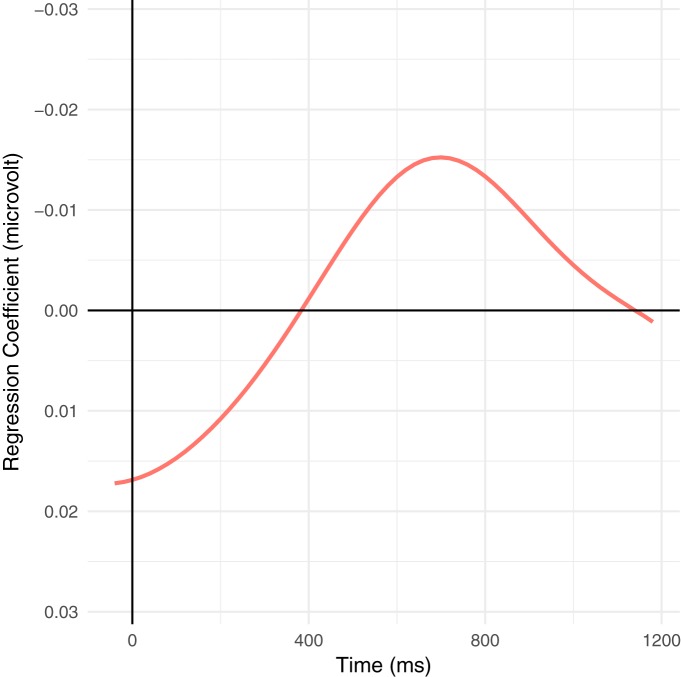Figure 3.
Time course of regression coefficients for the effect of frequency (logarithmic class), first calculated within and then averaged over participants (following the traditional grand-average methodology) with only the predictors shown for computational tractability. This is analogous to the traditional difference wave (Smith and Kutas, 2015a), but instead of the difference between binary classes represents the average difference between frequency classes, i.e., the average difference in the wave form for every order-of-magnitude reduction in frequency. Note that already at word onset, the effects have begun to diverge; the effects at a given word in a naturalistic context reflect the sum of the context and word-local, complex interactions. Large variances in word length enhance this effect.

